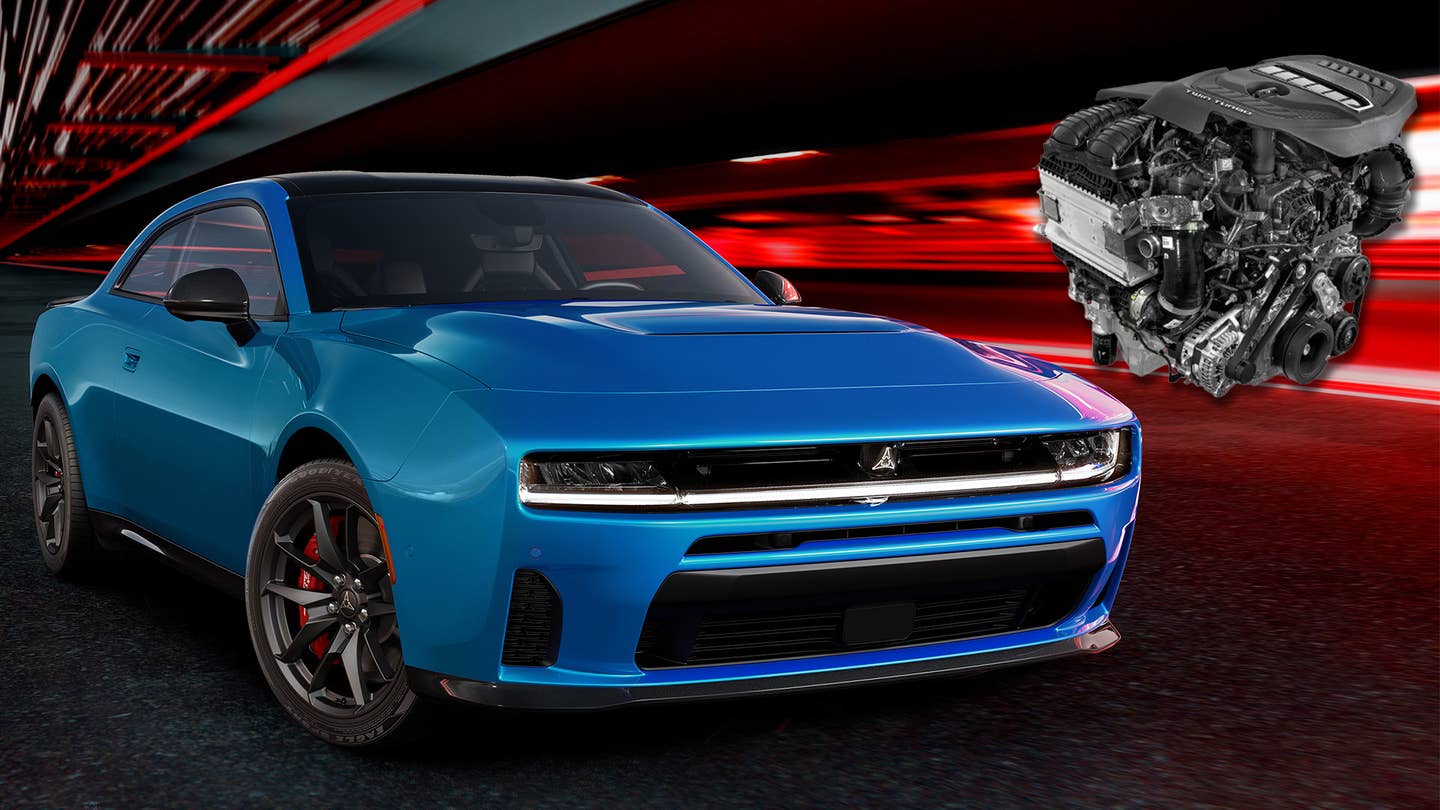The 2024 Dodge Charger Is the I6-Powered Mopar We Missed Out On in the ’70s
This Six-Pack isn’t anything like the old ones, but it gives American muscle car fans the chance to own a spiritual successor to foreign market forbidden fruit.

The 2024 Dodge Charger is here, and it brings many changes with it. Gone is the Hemi; in its place is either an electric drivetrain or a twin-turbo 3.0-liter inline-six. Four doors are optional, though for the first time in over 40 years, the Charger is once again available as a two-door. As strange and different as this all feels, the new model is bursting with heritage callbacks that Mopar fans will appreciate, like the revival of the beloved Six-Pack name. And while that doesn't mean the legendary multi-carb setup is back, it does signify the opportunity for diehard fans to get their hands on the high-powered inline-six Charger they've been waiting for since the '70s.
I'll explain, but first, some history.
"Most of our inspiration for the new Dodge Charger Daytona came from reflecting on our muscle car history as a whole," a Dodge spokesperson explained to The Drive. "We spent some time with our historical collection to capture the essence of what our Dodge muscle cars embody, and what we really wanted to emulate was the proportion and presence that our vehicles have always exuded."
The names given to various Charger models make it immediately evident that Dodge loves to pay homage. Most of them—like Daytona, R/T, and Scat Pack—we've seen on the prior generation. All of those are warmly welcomed back by the Mopar community, alongside the return of the Fratzog logo. The revival of the Six-Pack name is slightly more controversial as Dodge applies that term to the 3.0-liter twin-turbo I6; during the late 1960s, the Six-Pack nomenclature labeled nearly mythical induction systems found on V8s.
The mighty Mopar Six-Pack has quite the legacy. It was introduced in mid-1969 on 440 V8s, powering Dodge Super Bees and Plymouth Roadrunners. The name refers to three two-barrel carburetors, and changes to the engine's internals made for a seriously potent combination. They immediately earned a reputation as hard runners that would put the Titanic street Hemis to shame off the line, making Chrysler's claims of them producing just 390 hp feel a little questionable.
Knowing this, Dodge is sure to burn some purists by reviving the Six-Pack name for a six-cylinder. Even I was a little heated at first until I realized it's actually quite fitting when we look at the Charger's lesser-known history.
Americans are far from the only folks who enjoy muscle cars. Other countries have their sectors of muscle car culture that seem like bizarre offshoots of our own. In some instances, American car companies like Chrysler even produced models exclusively for those markets. Some shared the names with popular American counterparts, including the Valiant Charger, which was sold from 1971 to 1978 down under.
Australia's Valiant Charger happens to share a lot with the 2024 Charger Daytona, including a high-performance inline six-cylinder with a name that'll catch the uninitiated off-guard. Valiant Chargers could be outfitted with the Hemi-6. That's right—we're talking inline-six-cylinder engines that were rocking hemispherical combustion chambers.
The 265-cubic inch six-cylinder Hemis were quite stout, too. They were rated at an impressive 302 hp and 320 lb-ft of torque—more than the 340 Six-Packs were said to dish out. Interestingly, the most powerful versions of the Hemi-6 featured in E49 Chargers were breathing through three two-barrel carburetors, like the Six-Pack V8s back in America.
That really makes the 2024 Dodge Charger feel like a direct throwback to the Australian model of yore. If you look long enough, you can even start to see similarities in the exterior design—even if they're more coincidental than anything.
"If there is any one vehicle that has given direct inspiration to the new Dodge Charger Daytona, it would be the 1968 Charger," the Dodge spokesperson told me. "We view that as the king of our muscle car heritage. With heroic proportions and extremely bold front and rear graphics, it was definitely a vehicle for our reference."
Even if they aren't as deliberate as they would be on a dedicated throwback model, ties to the Australian Holy Grail are greatly appreciated. That's not to say styling cues taken from the '68 Charger go unnoticed, of course. As someone who spends every day way too close to the second-generation Charger, I really dig the work they've done here. Having a car that looks like the greatest generation of Charger and touches on some obscure Mopar lore is a big win for the true Mopar enthusiasts—even if we still have to warm up to the idea of a missing Hemi.
Got a tip? Send it in: tips@thedrive.com
